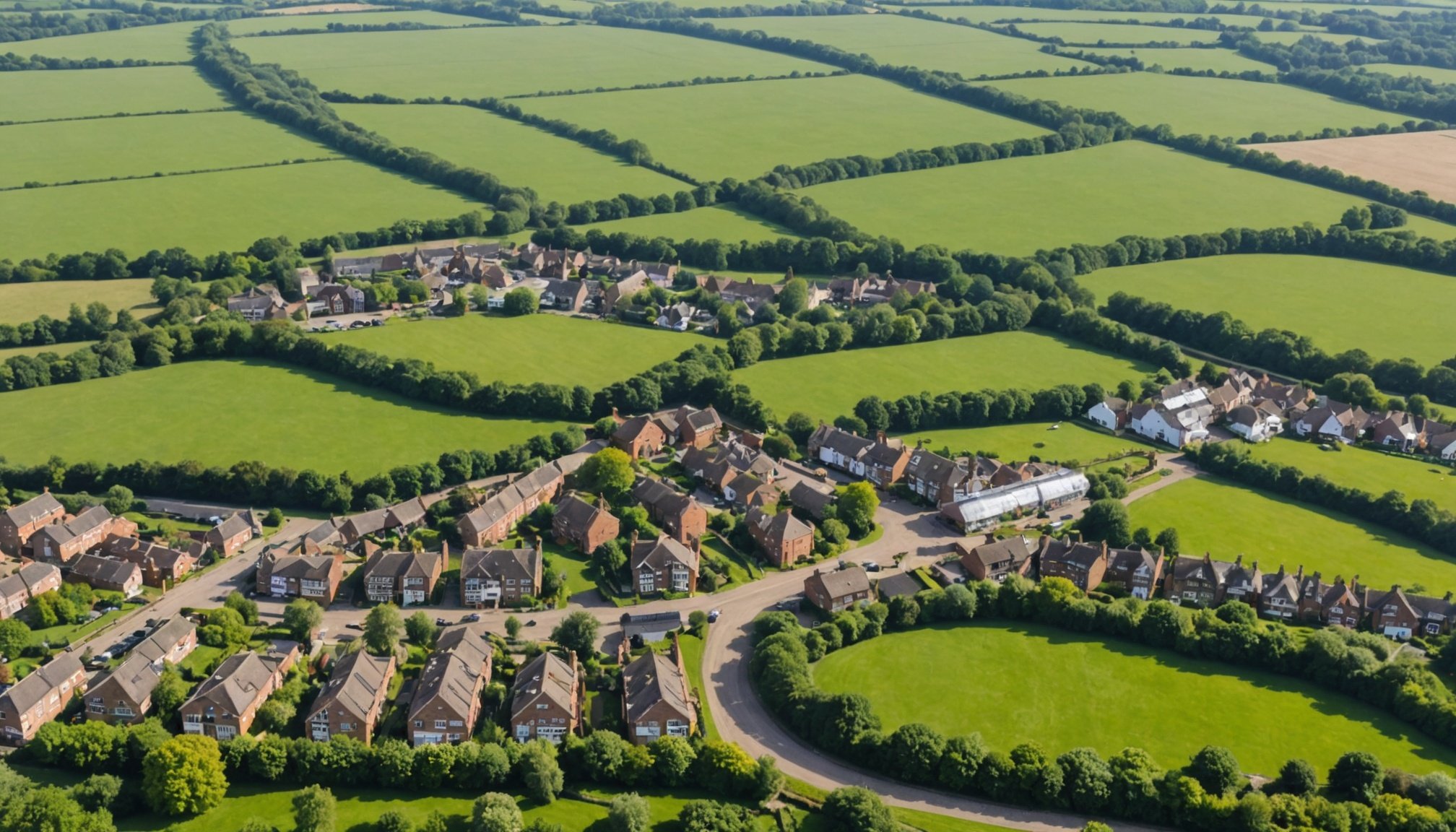Overview of UK Green Belt Policies
The UK’s Green Belt regulations are designed to prevent urban sprawl and maintain clear natural demarcations between cities. Green Belts serve as vital barriers by ensuring areas remain predominantly undeveloped. This helps retain the rural landscape and void encroachment by expanding urban projects beyond their traditional boundaries.
Property development laws within these areas are typically stringent, reflecting the need to protect open spaces for environmental and public use. The crux of the regulations is to allow development only in exceptional circumstances. Such exceptions might include cases where buildings are considered necessary for agriculture, forestry, or recreation. Proposals that might affect the openness of land and contradict the purpose of Green Belts face inevitable rejection.
Additional reading : Top Insulation Strategies for Coastal UK Homes: Protecting Against Salt Corrosion
Green Belt policies directly affect property development strategies, compelling developers to primarily focus on urban areas outside these protected zones. This has occasionally led to increased property values in urban peripheries due to the limited available land. Developers also look into brownfield sites or other areas with relaxed restrictions to circumvent challenges posed by Green Belt policies. With these constraints, developments in Green Belt zones tend to be innovative, seeking balance and sustainability to align with the mandated regulations.
Relevant Legislation and Planning Framework
In the realm of urban development, understanding the intricacies of planning legislation is crucial for successful projects. The National Planning Policy Framework (NPPF), established by the government, plays a pivotal role in setting national standards. It emphasises sustainable development and dictates that local planning authorities align their local plans accordingly. This alignment ensures consistency and clarity in planning processes, streamlining developments that align with broader government policies.
In the same genre : Top Strategies for Eco-Friendly Landscaping in Urban Development Initiatives
National Planning Policy Framework (NPPF)
The NPPF guides the creation and review of local development plans, demanding that they incorporate the broader policies and objectives. By following these guidelines, planners can advance projects that are environmentally responsible and socially beneficial.
Local Development Plans
Local development plans tailor national guidelines to the specific needs of regional communities. They provide a framework for making informed decisions on individual applications, ensuring that local interests are met while supporting broader policy goals. These plans are dynamic documents, regularly updated to reflect changes in local and national priorities.
Recent Amendments and Reforms
Recent legislative reforms have added layers of complexity to planning legislation. Modifications in development rights and shifts in planning priorities underscore the importance of staying informed. Developers face challenges including adapting to stringent national and local policies, but those who effectively navigate these landscapes can achieve success.
Strategic Planning Tips for Developers
Strategic development is crucial in any building project. One critical component is site assessment. This involves evaluating a potential site for various factors such as environmental impact, access to infrastructure, and suitability for the intended purpose. Thorough site assessments help identify potential obstacles and opportunities, enabling developers to make informed decisions early in the process.
Developers should engage with local authorities and communities from the outset. Building relationships with these stakeholders not only facilitates smoother planning application processes but also helps gauge local sentiments and potential resistance. Early engagement ensures that any concerns or ideas can be addressed proactively, fostering cooperation and community support.
When it comes to planning applications, providing comprehensive supporting evidence is vital. A robust application should include detailed plans, impact assessments, and justifications for the development. This helps in demonstrating the project’s viability and alignment with local regulations. Emphasizing evidence-backed planning increases the chances of approval, making the overall process more efficient and less contentious.
Incorporating these strategic planning tips at the developmental stage can significantly improve outcomes. Developers are better equipped to handle regulatory and community challenges, ensuring their projects proceed smoothly and successfully.
Case Studies of Successful Developments
Exploring successful projects within Green Belt areas can provide invaluable insights and best practices. Understanding the dynamics of these case studies aids in uncovering the secrets behind their achievement and offers guidelines for future endeavors.
Notable Examples of Green Belt Developments
One prominent example is the development in Hertfordshire, where planners innovatively balanced construction with environmental preservation. This project succeeded due to robust community engagement and the integration of eco-friendly designs. By ensuring minimal landscape disruption, the developers set a precedent for others aiming to work within Green Belt constraints.
Lessons Learned from Each Case
From these case studies, a key lesson is the importance of upholding transparency with local communities. Engagement not only garners trust but can also facilitate smoother approvals. Addressing environmental concerns early in the planning stages is vital, as demonstrated by Hertfordshire’s success. Moreover, establishing a dialogue with environmental stakeholders can lead to innovative solutions that benefit both development and ecological conservation.
Common Themes in Success
There are common themes across these successful projects:
- Community involvement plays a critical role.
- Eco-conscious planning is essential.
- Strategic stakeholder collaboration ensures varied interests are balanced.
These insights can arm future developers with the knowledge required to navigate the complexities of Green Belt property undertakings successfully.
Potential Pitfalls and Challenges
Developing in Green Belt areas presents unique development challenges that require careful navigation. One major obstacle is the regulatory hurdles developers face. These areas are subject to strict planning laws designed to prevent urban sprawl, protect the countryside, and maintain the character of rural communities. Navigating these regulations demands a thorough understanding of local planning policies and, often, creative solutions to align development proposals with stringent criteria.
Community opposition also frequently emerges as a significant challenge. Local residents and interest groups may resist new developments, fearing loss of green space, increased traffic, or changes to community dynamics. This community opposition can lead to prolonged planning disputes and necessitates a proactive approach to risk management. Engaging with the community early and transparently can help alleviate concerns and foster cooperation.
Effective risk management strategies are crucial in overcoming these challenges. Developing a comprehensive plan that includes stakeholder engagement, legal counsel, and expert guidance is highly advisable. By anticipating potential pitfalls, developers can create adaptive strategies that balance project ambitions with community and environmental priorities. Embracing this strategic foresight not only aids in successful project delivery but also ensures compliance with regulations, ultimately protecting both community interests and the developer’s investment.
Expert Opinions and Perspectives
Navigating the complex challenges of Green Belt development relies heavily on expert insights. Planning professionals emphasise a balanced approach, combining environmental sustainability with developmental needs. But what are the nuances of this strategy?
Interviews with Planning Experts
In conversations with seasoned planning professionals, it becomes evident that foresight and adaptive strategy are crucial. For instance, experts insist on comprehensive impact assessments prior to any proposal submissions. This approach serves to preemptively address environmental concerns, aligning plans with ecological sustainability.
Perspectives from Local Authorities
Engaging with local authorities offers valuable insights into regulatory frameworks and strategic priorities. Officials often stress the significance of aligning development proposals with local and national planning policies. Understanding these perspectives ensures that proposed developments align with overarching community goals and legislative requirements.
Community Engagement Insights
Effective community engagement is fundamental to the success of Green Belt projects. Industry experts argue that involving stakeholders early in the planning process fosters trust and collaboration. When communities feel heard, the likelihood of project approval and long-term viability increases. Transparent communication and regular updates are key to maintaining public support and addressing any contention that may arise.
Actionable Recommendations for Stakeholders
For developers aiming to align with Green Belt policies, a strategic approach is essential. Actionable advice begins with a thorough understanding of regulations. Familiarise yourself with current legislation to implement best practices effectively.
Developers should focus on stakeholder engagement as a critical component. Establishing open lines of communication can lead to more fruitful collaborations. Regular updates and inclusive meetings foster trust and transparency, beneficial for all parties. This involvement ensures that projects not only meet regulatory standards but also align with community expectations.
Another key practice is the continuous adaptation to evolving regulations. Policymakers often update guidelines that impact development rates and types. Staying informed about these changes is paramount. It allows stakeholders to adjust their approaches promptly, avoiding potential legal challenges or project delays.
To effectively implement these strategies, consider the following:
- Engage stakeholders early and consistently throughout the project.
- Invest in training to stay updated with the latest regulatory changes.
- Utilise digital tools for efficient project management and communication.
By integrating these steps, stakeholders can better adapt, ensuring projects thrive within community frameworks and regulatory boundaries. Prioritising these methodologies will lead to better alignment with both environmental goals and community needs, paving the way for sustainable development.











